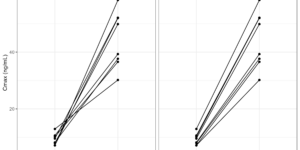Exploration of intra-individual variability in a multiple dose study during NCA
A non-compartmental analysis (NCA) is commonly performed to analyse the data of a pharmacokinetic study. It is an easy way of getting your pharmacokinetic parameters (such as the Cmax, tmax, …










